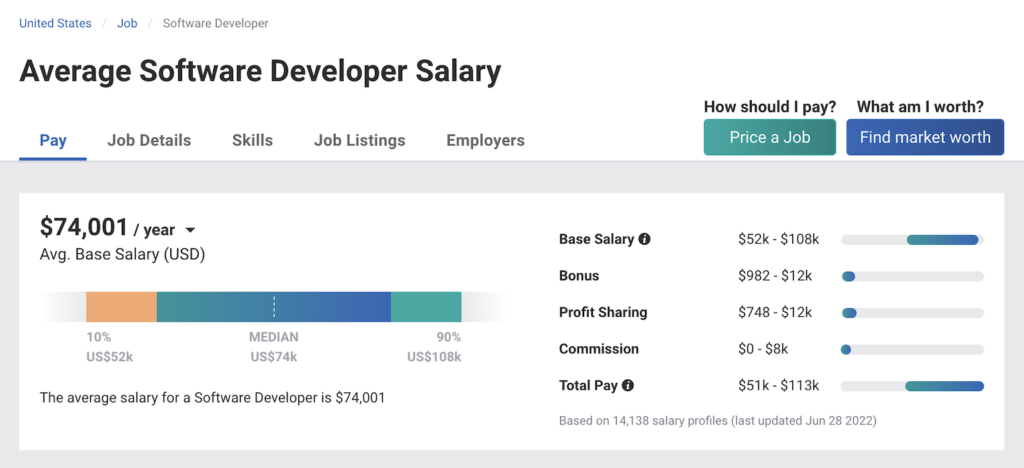Committed Developers vs. In-House Teams: Which Is Right for You?
The decision between utilizing committed programmers and keeping an internal group is a substantial one that can influence the trajectory of your tasks and overall service approach. Dedicated designers give a level of versatility and specialized knowledge that can be beneficial for particular, temporary efforts. On the other hand, internal groups add to a natural business society and a nuanced understanding of long-lasting objectives. By taking a look at critical elements such as budget, job scope, and wanted control, you can better establish which approach lines up with your business demands. Nonetheless, the effects of this selection expand past prompt results-- take into consideration the more comprehensive effect on your business landscape.
Recognizing Dedicated Developers
The expanding need for specialized skills in the technology sector has actually caused the appearance of committed designers as a viable solution for lots of organizations. These experts are commonly contracted on a job basis, permitting business to utilize specific proficiency without the long-lasting commitment connected with full-time hires. Devoted programmers are typically ingrained within a client's team, offering adaptability and scalability to satisfy project demands.
This version permits organizations to access an international talent swimming pool, which is specifically advantageous in a quickly progressing technical landscape. Devoted programmers can be sourced from numerous geographical locations, making certain that firms can find the appropriate capability at affordable rates. They often bring a wide range of experience and knowledge, having worked with varied projects across different sectors.
Moreover, devoted designers can concentrate specifically on the tasks handy, enhancing productivity and performance. They are equipped to incorporate perfectly right into existing process, collaborating closely with in-house groups to attain task goals. This method not only reduces the burden of employment and training but likewise permits companies to continue to be agile, adjusting quickly to altering market needs and technological innovations.
Advantages of In-House Teams

In addition, in-house teams tend to have a much deeper understanding of the company's mission, worths, and objectives. This alignment can enhance employee engagement and inspiration, as staff member feel extra connected to their job and the company's success. In addition, having a dedicated in-house group enables for much better placement of approaches and purposes, as these participants are continually concentrated on the company's top priorities.
In-house teams also promote quicker decision-making procedures, as they can react extra quickly to obstacles and adjustments. The established relationships and knowledge with firm procedures enable streamlined process and minimized miscommunication. Eventually, the combination of a natural culture, placement with business objectives, and effective interaction makes internal teams a valuable property for lots of companies, specifically those wanting to grow lasting development and advancement.
Cost Considerations
When assessing cost considerations, both in-house teams and committed designers present distinct monetary implications for organizations. Engaging specialized designers normally includes a pay-per-project or hourly rate version, which can be cost-efficient for businesses with rising and fall job demands. This strategy permits adaptability in scaling resources up or down, ensuring that business only pay for the services they need.
On the other hand, internal teams entail repaired costs, consisting of incomes, benefits, and overhead expenditures such as office room and equipment. While this version uses better control and prompt availability of sources, it might bring about greater lasting expenditures, especially if the workload does not warrant a permanent team.
Additionally, companies should consider the concealed costs connected with recruitment and training of internal workers, which can better strain budget plans. In many cases, the time and resources spent on taking care of an internal group can diminish the company's core organization purposes.

Job Administration and Adaptability
Task monitoring and adaptability are crucial elements that affect the option between in-house teams and devoted developers. Committed designers usually supply a high degree of versatility, see here enabling companies to you could try here range resources up or down based on project demands. This dexterity can be especially beneficial for services experiencing rising and fall work or those looking for to innovate swiftly. Dedicated teams commonly have actually developed processes for managing tasks efficiently, leveraging details techniques like Agile or Scrum, which help with iterative development and adaptability.

Eventually, the selection in between specialized programmers and in-house groups hinges on the desired level of versatility and the specific project monitoring requirements. Business must assess their operational dynamics, job intricacy, and source availability to establish which option aligns best with their strategic objectives.
Making the Right Choice
Selecting the best advancement strategy-- in-house groups or specialized developers-- requires a careful evaluation of various factors that straighten with a company's critical objectives. On the other hand, internal groups can provide far better continuity and combination with existing personnel.
Next, Related Site evaluate your budget plan. Dedicated designers commonly present an affordable remedy for short-term projects, while internal teams might incur greater long-lasting costs as a result of wages, benefits, and overhead costs. Analyze the level of control and cooperation preferred; internal teams generally promote stronger communication and positioning with firm society.
Additionally, consider the time frame. If immediate outcomes are necessary, specialized programmers can be onboarded swiftly, whereas developing an in-house group takes time for employment and training. Lastly, consider the lasting vision of your company. Spending in an in-house group may produce much better returns over time if constant development is essential. Inevitably, the choice rests on a comprehensive analysis of these variables, making certain placement with your company's total purposes and functional needs.
Conclusion
To conclude, the choice in between dedicated programmers and in-house teams rests on task demands and business purposes. Devoted developers give adaptability and specific proficiency, making them appropriate for temporary efforts. Conversely, in-house groups cultivate a cohesive society and much deeper placement with lasting goals. Cautious examination of budget constraints, project timelines, and preferred control levels is vital for establishing the most proper approach, making certain positioning with critical top priorities and operational efficiency.
The choice between utilizing specialized developers and maintaining an internal team is a significant one that can influence the trajectory of your jobs and overall service approach.Job administration and adaptability are critical factors that affect the option between dedicated designers and internal teams. hire dedicated developers.In contrast, internal teams might succeed in maintaining a regular task administration structure due to their knowledge with the organization's culture and long-term objectives. Committed developers often offer a cost-efficient service for short-term jobs, while internal groups may incur higher long-lasting costs due to incomes, benefits, and overhead costs.In final thought, the decision in between devoted developers and internal teams pivots on task needs and business purposes